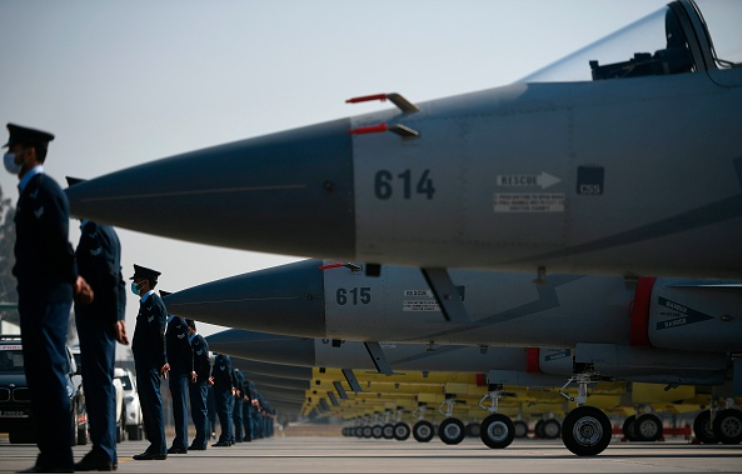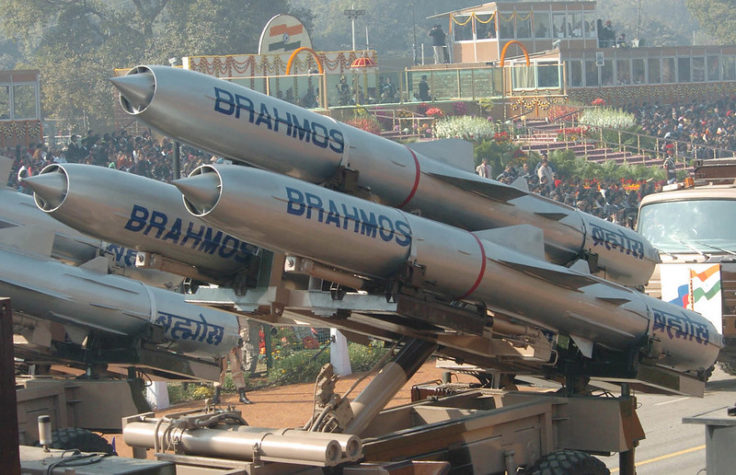
The interplay of global power competition and nuclear weapon states sharing disputed borders continue to make South Asia one of the most volatile regions in the world today. February 2021 marked two years since the 2019 India-Pakistan Pulwama-Balakot crisis, as well as the start of the most recent ceasefire on the Line of Control (LoC). While the two countries have reportedly maintained the ceasefire for the past five months, the situation is still far from normal. There are no substantial arms control measures in place between India and Pakistan and existing confidence building measures are aging. Escalatory doctrines, including India’s Cold Start Doctrine (CSD) which seeks space for limited conventional war under Pakistan’s perceived nuclear thresholds, carry the grave risk of escalation to nuclear level. Durable peace in the region rests on a Strategic Restraint Regime (SRR), which would include mechanisms for dispute resolution, nuclear restraint, and maintaining a conventional military balance.
It would be unrealistic to contemplate peace and stability in South Asia without resolving territorial disputes, agreeing on reciprocal measures for nuclear restraint, and establishing a mechanism to bring balance between conventional forces. This can only be achieved through a sustained process of dialogue and realization that such restraint offers mutual benefits. In October 2020, Pakistan reiterated its call for an SRR in South Asia. Revisiting an SRR would also provide a viable option to address emerging technologies which are adding a new layer of complexity to strategic stability in South Asia. The advent of disruptive technologies in the region such as hypersonic glide vehicles, Ballistic Missile Defense systems (BMDs), canisterization of ballistic missiles like the Agni-V, and the nuclearization of the Indian Ocean, has potential to offset deterrence equilibrium in the region.
The Role of Global Actors
Strategic instabilities between India and Pakistan are deeply linked with the contemporary geopolitics. As the world gradually moves towards multipolarity, the United States is seen as struggling to maintain its global preeminence amidst a rising China and resurging Russia. Further, the emerging fifth age of technological development has pushed the United States, Russia, and China to place arms control on the backburner—with the arms control structure between the United States and Russia standing only on the recently renewed New START treaty. The intensifying competition for preeminence and hegemony affects the global strategic scenario and South Asia. An SRR, which would focus on bilateral arms control and restraint, is critical for contextualizing India-Pakistan arms control measures outside an increasingly unstable geopolitical environment.
Revisiting an SRR would also provide a viable option to address emerging technologies which are adding a new layer of complexity to strategic stability in South Asia.
India has emerged as a major beneficiary of this competition through cooperation with both the United States and Russia. Cooperation between India and the United States took off following the 2005 Indo-U.S. Nuclear Deal and India’s Nuclear Supplier Group (NSG) waiver in 2008, since then India and the United States have signed multiple defense, trade, and intelligence sharing agreements including the Defense, Technology and Tradi Initiative in 2012, the Logistics Exchange Memorandum of Agreement (LEMOA) in 2016, the Communications Cooperation and Security Agreement (COMCASA) in 2018, and the Basic Exchange and Cooperation Agreement (also known as BECA) in 2020, which compliments the LEMOA and COMCASA agreements for military cooperation and support. With Russia, cooperation has included the acquisition of state of the art S-400 Missile Defense System, Akula class nuclear powered attack submarines, and a joint venture for the nuclear-capable BrahMos supersonic cruise missile. Inter alia these developments and agreements have a cascading effect on Pakistan’s security. Consequently, Pakistan seeks to indigenously develop technological solutions—such as Short Range Ballistic Missiles (SRBMs) and a sea-based deterrent—to offset the resulting asymmetries, which are potentially dangerous for Pakistan’s deterrence credibility, while also diversifying its foreign policy options and maintaining ties with China. The bid to maintain conventional balance has also involved joint ventures of advanced multirole combat aircraft (JF-17) and advanced attack submarines (Hangor class).

South Asia’s Strategic Asymmetries
Beyond the global environment, regional growth and development in South Asia is hampered by a set of challenges including the historical animosity between India and Pakistan and their divergent political and strategic aspirations shape South Asian security imperatives. Although India and Pakistan recently entered into a ceasefire on the LoC, Kashmir remains a core issue between the two countries and is likely to remain a nuclear flashpoint particularly following the abrogation of Article 370 and 35A of the Indian Constitution. At the doctrinal level, the offensive Cold Start, that seeks to explore space for subconventional and limited warfare under the nuclear overhang, creates concern about India’s intent to carry out preemptive attacks. The conventional imbalance is also a cause of concern for Pakistan, as India has also become the second largest arms importer of the world.
On nuclear posture side, Pakistan has long doubted India’s policy of No First Use (NFU), which has been exacerbated as India appears to be taking global pulse over the pros and cons of removing the shroud of NFU with statements made by political figures including India’s current Defense Minster that bring the doctrine into question. Recent technological and force posture developments suggest that New Delhi may be weighing its strategic options regarding a pre-emptive nuclear doctrine that would rely on counterforce targeting. On the developmental side, there is visible qualitative and quantitative military build-up, which has not only strained the deterrence equilibrium but also runs contrary to New Delhi’s claimed doctrinal position of credible minimum deterrence. Indian weapon development and modernization far exceeds any reasonable requirements for maintaining a credible and minimal deterrence posture around NFU policies. Such developments can only be required if a state is pursuing nuclear warfighting doctrines and comprehensive first strike to support pre-emption.
While some experts have pointed to the “strategic chain” of U.S.-China-India-Pakistan cascade dynamics as the driver of this competition, as well as the China-centric focus of India’s force modernization, from Islamabad’s vantage point, India’s modernization efforts appear much more South Asia specific. U.S. and regional experts in a recent report by the Stockholm International Peace Institute acknowledge: “India talks China, but acts Pakistan.” For this reason, the bulk of India’s conventional and nuclear forces are viewed as Pakistan specific and do not contribute to its deterrence relationship with China.
While some experts have pointed to the “strategic chain” of U.S.-China-India-Pakistan cascade dynamics as the driver of this competition, as well as the China-centric focus of India’s force modernization, from Islamabad’s vantage point, India’s modernization efforts appear much more South Asia specific.
Pakistan seeks strategic balance at the minimalistic level of armament for credible deterrence. While reports indicate that Indian and Pakistani nuclear warhead count is in close proximity and project arms racing in South Asia, a recent study by the Belfer Center paints a different picture, noting that the full-capacity of India’s fissile material—including unsafeguarded stockpiles which are weapon usable—would support as much as 2,686 nuclear warheads. This capacity is attributed to India’s 2008 NSG waiver, which enables New Delhi to meet all its energy needs through international cooperation while freeing the domestic fissile material for possible weapons development.
In context of growing nuclear asymmetries in South Asia, Pakistan is expected to adhere to unilateral restraint. However, Pakistan has not been left room for such restraint. India’s development of a BMD system led Pakistan to demonstrate multiple independent re-entry vehicle (MIRV) capability in response, nuclearization of the Indian Ocean pushed Pakistan to develop sea-based nuclear deterrent, and India’s CSD left Pakistan with no choice but to develop SRBMs. Pakistan’s various proposals to India included non-development of BMD system which would have foreclosed the requirement for MIRVs and Indian Ocean Nuclear Weapons Free Zone would have obviated the need for sea-based nuclear deterrent. Pakistan is exercising strategic restraint, but capabilities at bare-minimum level of armament remain imperative for Pakistan to maintain its credibility of deterrence. Pakistan has been open to arms control measures, which include building confidence and introducing a SRR. Some ideas consistent with this regime that have been proposed in Track II settings may be worth exploring further. Lack of reciprocity has only aggravated regional instability. As a responsible nuclear power, Pakistan maintains modest force posture and rationality in its nuclear doctrine.
The Way Forward
The SRR offers a pathway for reducing Indian and Pakistani dependence on external powers and takes the great power factor out of the security calculus. The SRR has three interlocking elements: conflict resolution, nuclear and missile restraint, and conventional balance which should be pursued in tandem owing to the interlocking nature of these proposals. The proposal includes conflict resolution through a sustained and result-oriented dialogue; measures for nuclear restraint and conventional balance; maintenance of nuclear weapons on low-alert status; non-acquisition or deployment of BMD systems; avoidance of a nuclear, missile, or conventional arms race; and, continuation of nuclear test moratoriums. India, however, remains reluctant to engage on these issues driven by aspirations of global power status and de-hyphenation with Pakistan. However, if India remains embroiled in regional disputes, pursuance of global ambitions will remain a challenge.
The unresolved Kashmir issue remains a major bone of contention between India and Pakistan, unless it finds a plausible solution, durable peace in the region will remain elusive. Likewise, the conventional imbalance becomes a key driver for vertical nuclear proliferation and geostrategic instability. History is also evident that arms control measures help reduce tensions and bridge trust deficits amongst rival states. The SRR proposed by Pakistan bears all these contours essential for holistic peace and stability in the region. In the absence of these measures, South Asia will drift towards instability and preventing nuclear disasters will become a growing challenge.
Brigadier Imran Hassan is Director at Arms Control and Disarmament Affairs, Strategic Plans Division, Pakistan. He is a graduate of Command and Staff College, Quetta; Quaid-i-Azam University, Islamabad and the Naval Post Graduate School, Monterey. He also holds an MPhil in Strategic Studies from National Defence University. He is former visiting research fellow for South Asia (Strategic Affairs) at International Institute of Strategic Studies, London. The views expressed by the author are his own.
Editor’s Note: This article is the first in a two-part series featuring perspectives on strategic stability, deterrence, and prospects for future confidence building mechanims in South Asia. Read part two: “India’s Strategic Challenges and Prospects for CBMs in South Asia.”
***
Image 1: AAMIR QURESHI/AFP via Getty Images
Image 2: Public.Resource.Org via Flickr


